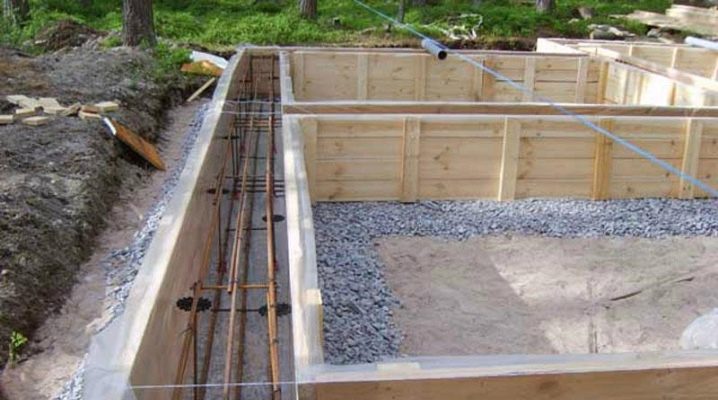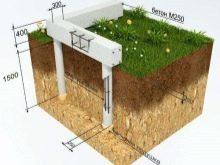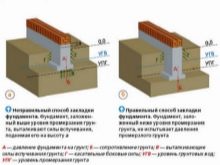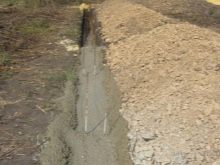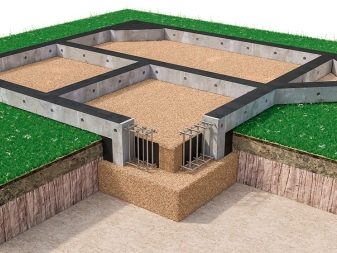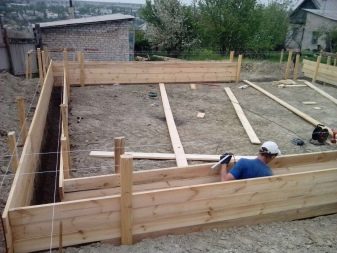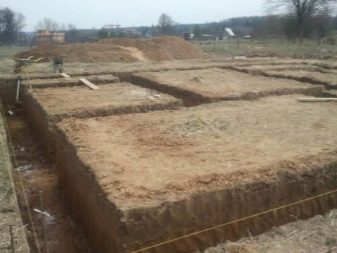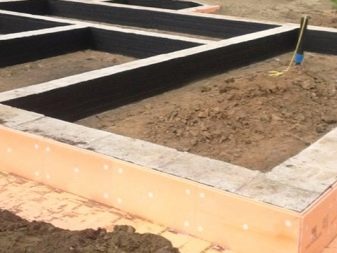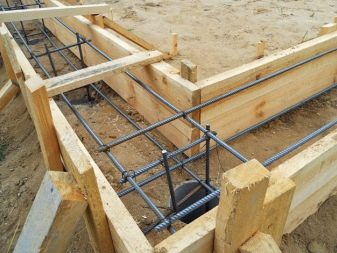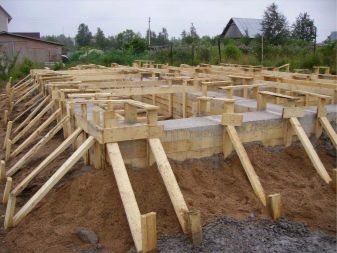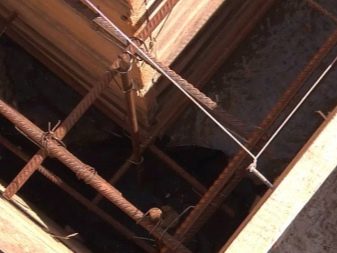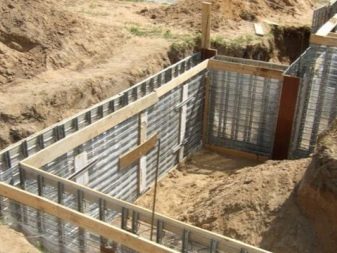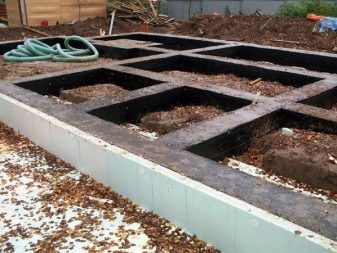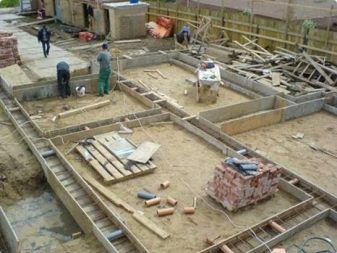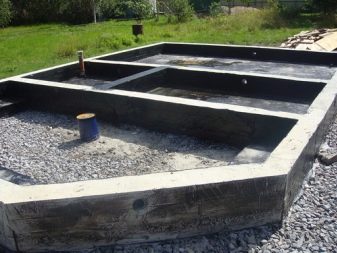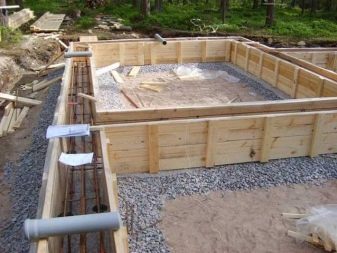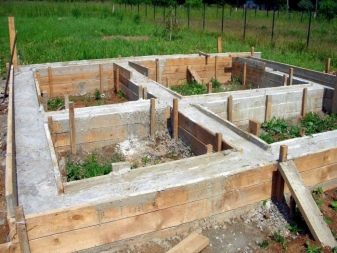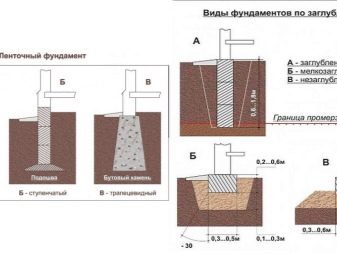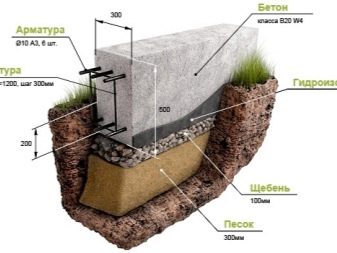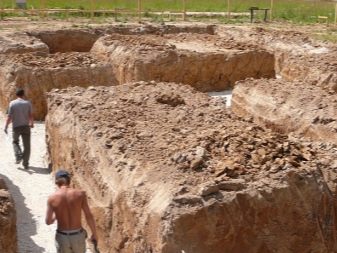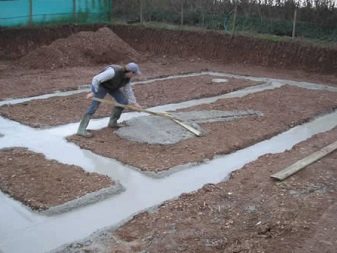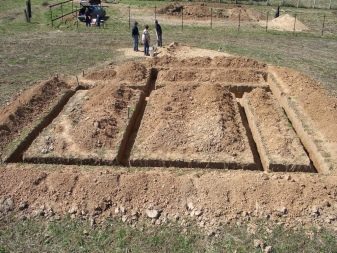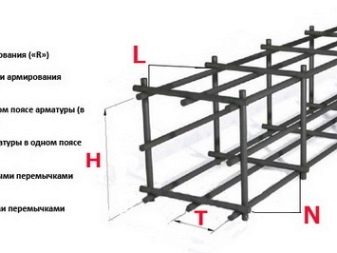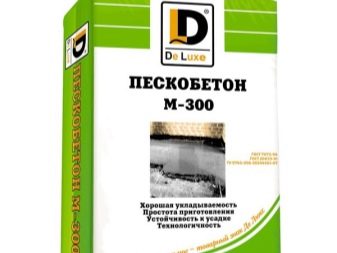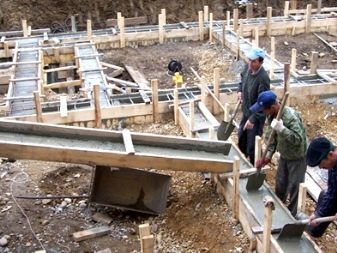What should be the depth of laying the strip foundation?
Builders always strive to make their work easier and cheaper, to reduce the loss of time. The complexity and complexity of the foundation work when choosing a tape type of foundation is optimal, which led to its great popularity. However, it is important to consider all the subtleties, and avoid common technical errors.
Special features
Ribbon foundation is supposed to arrange around the perimeter of the house, including under the internal bearing walls. Often, such a foundation is constructed under heavyweight houses made of natural stone, brick or concrete blocks. But it is also compatible with buildings that have reinforced concrete floors. Another advantage of the tape is its suitability for placementcellars and cellars. It is much more difficult, and sometimes impossible, to equip plate structures with such rooms.
Already a general description shows that the depth of the ribbons is usually quite large. However, the simplicity of the technology used justifies its use in low-rise buildings and in the construction of ancillary facilities. Belt bases also work well even where there is a risk of uneven shrinkage of the building. This is usually due to the heterogeneous composition of the soil, which has different mechanical characteristics. When constructing a basement, you can use the foundation structure in the form of ready-made capital walls.
The period of service strongly depends on the material used. So, concrete and rubble stone can work up to two centuries in a row. But a lot depends on:
- load and its changes;
- the quality of the materials used;
- characteristics of the solution;
- soil properties and climatic parameters of the area.
The tape can be made in a monolithic form, from prefabricated units or a combination of these two approaches.
For the manufacture of the foundation, in addition to concrete and rubble stone, sometimes used their mixture or brickwork.The tape is made both in the form of a straight contour and with gaps, the geometric shape is a rectangle or a trapezium. In any case, the width is taken not less than that of the supported wall, and ideally - 100-150 mm more. The wide variety of types of strip foundations does not mean that they can be chosen arbitrarily, there are quite strict building standards.
Regulatory requirements
The construction of a foundation strip of a small bookmark under a one-story house is possible even on a cushion of sand and gravel, it helps save money and speed up the production of work without any risk. But this work can only be done on certain soils:
- unwilling to swelling;
- completely dry;
- characterized by uniform freezing.
Reinforced concrete tape with a shallow depth under a small private house is 0.3-0.5 m wide underground, the height of the basement is at least 0.3 m. For the most accurate work, start with the markup, then dig trenches, the walls of which should be vertically even. A small intake allows you to get along in trenches with a depth of 0.5 and a width of 0.6 to 0.8 m. When the excavations are dug out and leveled, a sand pad of 200-400 mm is made.It is supposed to be tamped, because the denser the base, the smaller the drawdown of the whole house over time.
Sand filling is done in layers of 150 mm, it is required to moisten it before ramming. For the highest mechanical strength, gravel is poured from above with watering with a liquid concrete solution.
To form the formwork, use boards of 2 cm thickness ground on one side. Instead, you can take more:
- slate in the form of flat sheets;
- sheet metal;
- plywood
The formwork is reinforced using struts and support stakes; it must be calibrated vertically and horizontally. Inside the construction is laid dense waterproofing material. To the required thickness of this material was less, you should select the depth of the bookmark, focusing on the level and movement of groundwater.
The foundation in the form of a ribbon for a two-story house of bricks is placed in a pit, filled with 0.3 m of sand. Since the house will have to be equipped with sanitary facilities, it is recommended to add a screed made of cement and sand up to 0.1 m thick over water and sewer pipes.
The waterproofing is put on the frozen screed, but the heat-insulating layer is not always needed. Then comes the frame created from the reinforcing steel network, then the formwork.Only after that and you can pour the tape as such. The sole of the base under the house must necessarily go 200-250 mm deeper than the freezing line. Foam blocks houses are lighter than similar-sized brick buildings.
But this does not automatically mean that you can lay the foundation closer to the surface. We will have to analyze all the parameters characterizing the geological structure of the site. Additionally taken into account the severity of the project overlap, furniture products, snow load, which may be present on the roof, even for a short time. Among the various options for bookmarks in depth should choose the one that you can afford, for material reasons. The soil in different areas freezes through 100-180 cm, and in most cases, it is chosen to lay up to 150 cm.
It is necessary to take into account that even when using information from geological exploration and norms of SNiP during calculations, it is possible to find only the minimum necessary values.
To fully guarantee the sustainability and risk prevention, it is worthwhile to add the base of the basement 10 cm further.
Trenches are thought out and excavated immediately with a reserve for all necessary layers of bedding, screeds and additional structures.A relatively light house on the ground, which is not prone to heaving, may be placed on the base with a depth of 600 mm, made in the format of a floating tape. Such a design must be carefully calculated, only this allows you to avoid destruction when moving ground masses.
The tape for aerated concrete must be calculated no less carefully than under a brick or other heavy material. The lightness of the above-ground structures is deceptive; without careful calculations of the strength and bearing capacity of the support, they will prove to be unreliable. The project of the foundation should be prepared, as much as possible quenching the buoyancy force. For heavier wall materials, it is insignificant, but lightweight aerated concrete blocks are easily pushed out of the soil.
Warning: most architects believe that under aerated concrete, in general, it is better to drive in piles, and not to fill the tape.
If, nevertheless, the choice is made in favor of the filler support, in the calculation, they are primarily focused on
- the mass of the walls and the pressure they exert on 1 pog. m;
- mass of all floors;
- the severity of roofing materials and underlying structures.
How to calculate?
The depth of occurrence referred to in various sources and special literature is not the depth of a trench being torn off. By this term, specialists understand the gap separating the soil surface from the lowest plane of the foundation. The tape without recessing is used extremely rarely, since its carrying capacity is extremely small. The minimum penetration is more often deep, but at the same time it is capricious. We'll have to calculate the effect of the forces of heaving of the soil.
The depth of laying can not be less than 50% of the depth of soil freezing. If the level of groundwater is high, it is usually carried out at 100–200 mm under the freeze line. An exception is made for rocky soils, gravel mass or sand substrate with coarse grain. In swampy soil, on peat and similar grounds, the tape will have to be placed below the problem layers. Sometimes there is only enough trench to a solid mass filled with sand; but such a decision can be made only by trained professionals.
If it follows from the calculations that it is necessary to dig trenches too deeply, you need to look for alternative solutions.
Warming the foundation and the adjacent soil will help to significantly reduce the necessary excavation. The organization of quality drainage has not the last role, it helps protect against frost penetration. Sand pillow should be placed both under the tape itself and on the side of it. The best way to solve the problem is considered to be a combined approach - a combination of pillows, insulation and drainage structures.
The average point of the bookmark changes depending on whether the house is heated or not, whether it is planned to make a basement. For unheated buildings, there is enough reserve of 10%, and if the building is heated, you need 30%.
Attention: putting the tape deeper than 150 cm is not recommended. Freezing is calculated by special factors. It is 0.23 for clay and loam, 0.34 for soil from large fragments, and 0.28 for sand.
It is possible to dig a pit for a simple concrete strip placed under barns, poultry houses and small-scale outbuildings from 0.5 to 1 m deep. For most of these structures, except for the most massive, 80 cm is enough. But a residential building, even a relatively small (one-story), should be fixed below, its root is about 2 meters tall. However, the differences are not limited to this.In residential construction, the tape is supposed to be reinforced, which immediately increases its width.
The formwork must contain a rebar made of reinforcement bar. A bunch of rods is achieved through the use of knitting wire. Strength after casting is achieved in 28 - 42 days on average. Only on the hardened tape can you put the wall. At construction of the house with a basement the trench technique is not suitable, the ditch becomes obligatory. If you plan to build a two-story and higher housing, you will have to use standard blocks of increased strength; their height is certainly taken into account.
Tips
It is not recommended to prepare trenches wider than 400 mm. A total of 0.2 m is laid on the backfilling and bedding. Only such layers provide a real guarantee against sagging.
According to experts, for the formation of a foundation tape in bulk, it is worth taking cement of category M-300.
In order for the construction to justify itself, the solution is formed only from pure water, the absence of impurities of clay and soil in inert materials is achieved, and proportions are strictly observed.
The depth of the strip foundation for the house, the calculation and construction of the strip foundation with their own hands are shown in the following video
